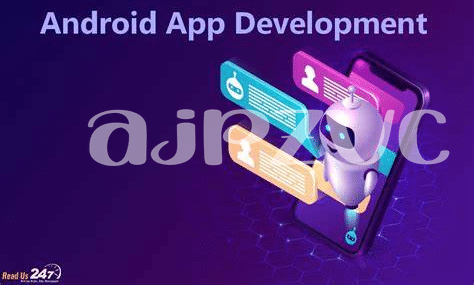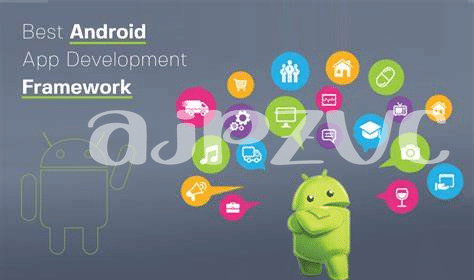- The Speed Duel: Native Apps 🏎️
- Hybrid Apps: a Balancing Act 🎭
- User Experience: Smooth Sailing or Choppy Waters? 🌊
- Accessing Device Features: Native’s Home Advantage 🏠
- The Cost of Performance: Budgeting Your Build 💰
- Future-proofing Your App: Adapt and Overcome 🌟
Table of Contents
ToggleThe Speed Duel: Native Apps 🏎️
Imagine a race track, where speed is king and every millisecond counts. In the world of apps, native development is the sleek sports car that’s built for performance. These apps are tailor-made for a specific platform, like iOS or Android, which means they speak the same language as the devices they run on. This can lead to faster start times, smoother animations, and an overall zippiness that can outpace the competition.
Now, consider this: when you’re deep into app use, the last thing you want is for it to freeze or crash. That’s where native apps often shine. Imagine having “diamond hands” 🙌 in the app world – sticking with native development is like holding tight to an asset that consistently performs, even when the digital market gets choppy.
But remember, just as a “whale” 🐋 can make waves in cryptocurrency prices, a powerful native app can leave a lasting impact on your phone’s resources. These apps harness the full power of the device’s hardware, acting like a well-oiled machine that knows every turn of the circuit.
| Feature | Native Apps |
|---|---|
| Performance | Optimized for speed and efficiency |
| Stability | Less prone to crashes and bugs |
| Resource Access | Direct integration with device capabilities |
The essence of choosing native development lies in its ability to deliver a user experience that’s as smooth as butter – because nobody wants to be a “bagholder” 📉, stuck with something that doesn’t work when needed the most.
Hybrid Apps: a Balancing Act 🎭
Imagine walking a tightrope with the perfect blend of ease and technical skill – that’s the art of creating hybrid apps. These digital performers expertly twirl between the realms of native speedsters and web-based wonders, offering a bit of both worlds. They’re crafted with a mix of native code and web technology, aiming to deliver users a seamless experience without breaking the bank. While they might not blast off at the same high speeds as native apps 🏎️, hybrids hold their own by being cost-effective and reasonably quick on the uptake. They charm the cost-conscious developer while still winking at the user, promising a smooth-enough journey across various devices 🌐. The true craft lies in making sure these hybrids don’t leave users feeling like they’ve got weak hands when the performance dip comes knocking. A well-constructed hybrid app knows when to ‘HODL’ onto its resources and when to lend users a bit of that FOMO, keeping them hooked. With the smart use of tools and frameworks, hybrid apps stand tall, embracing agility and maintaining a sturdy presence across platforms.
what is the best free ringtone app for android 2018
User Experience: Smooth Sailing or Choppy Waters? 🌊
Imagine taking your shiny new app out for a spin; you want every user to feel like they’re cruising smoothly on a clear day, not wrestling with the wheel in a stormy sea. When you choose between creating a native app or going hybrid, you’re essentially deciding between an experience as sleek as a speedboat or one that could have a bit of rocking in the waves. Native apps are like tailor-made yachts built for specific waters; they’re crafted to fit one type of device perfectly. This means they usually run faster and more smoothly, giving users that VIP ride. Meanwhile, hybrid apps have to be versatile dinghies, designed to stay afloat across different platforms. Sure, they might not glide quite as effortlessly, and sometimes they might feel like you’re fishing for performance with weak hands, but they can still provide a fairly pleasant journey.
The beauty of native development is akin to HODLing a top-notch craft through market storms; you’re investing in quality that’ll stand the test of waves, confident your users won’t bail at the sight of choppy performance. On the flip side, hybrid apps can be like FOMO-driven sailors, trying to reach every port but risking a rougher ride. Whether your endgame is a smooth sailing experience or a clever compromise between reach and refinement will steer your choice. So, helm in hand, chart the course that’ll keep your app’s journey as majestic as the open seas. 🚀🌐💎
Accessing Device Features: Native’s Home Advantage 🏠
Imagine you’ve built a treehouse in your very own backyard—it’s comfortable and has everything you need because you designed exactly where every nail and plank should go. That’s a bit like building a native app, where developers can really dig into the benefits of your smartphone. They have a front-row seat to the phone’s camera, GPS, accelerometer, and more, essentially giving them the master key to all the techie goodies that make your app experience shine. It’s no simple task though; crafting such a snug fit demands more coin and time, like a well-tailored suit. While being a bagholder with a heavy app can be daunting, native apps tend to ward off the rekt feeling that comes with sluggish performance. And if you ever find yourself thinkin’ “IYKYK,” when it comes to the bells and whistles of your phone, like those sweet custom sounds, check out what is the best free ringtone app for android 2018. Remember, like HODLing your crypto assets, investing in native development might require holding on through the stormy weather, but the sunny days that follow can be brilliant, paving the path for an app that feels right at home on your device. 🏠💡🚀
The Cost of Performance: Budgeting Your Build 💰
When it comes to crafting an app, whether sleek and native or versatile and hybrid, the cash you part with is as crucial as the code itself. 💸 For starters, picture going all-in, ape style, on a native app – you’re banking on the speed and smoothness, but it might just eat up your budget with its hunger for high-end resources. Not all heroes wear capes; sometimes, they make smart financial calls to avoid being the bagholder after the hype fades.
Now, let’s talk hybrids. Like a jack-of-all-trades, they stretch your dollar, bending it like an acrobat to cover more ground. 🤹 They might not always zoom like their native cousins, but hybrids have a trick up their sleeve – they’re economical and can moon under right conditions, giving you the mileage without costing a fortune. It’s a tightrope of cost versus performance, but if you DYOR, the fruits of your labor can indeed be sweet.
| Development Type | Initial Cost | Ongoing Cost | Time to Market |
|---|---|---|---|
| Native | Higher | Varies | Longer |
| Hybrid | Lower | Consistent | Shorter |
Future-proofing Your App: Adapt and Overcome 🌟
When you dive into creating a killer app, it’s not just about the now; it’s about staying ahead of the game for years to come 🚀. Think of the app world as a raging sea; trends and technologies can change like the tides. So, by choosing the right development path, you’re essentially building a boat that’s ready for future storms. Hybrid development often gets a hat-tip here, offering flexibility to sail across different platforms. But remember, it’s crucial to keep updating and adapting to avoid your ship becoming an outdated relic.
On the other side of the coin, there’s a need to avoid being a bagholder of obsolete tech 🎒. HODLing to the tools and codes that once were shiny and new won’t help when your app starts to creak and groan under the weight of user demands. That’s why it’s vital to continuously swim in the current of progress, DYOR for the most cutting-edge frameworks, and sometimes, even BTD on new tech to ensure you’re not left behind in the digital dust. This proactive strategy is the digital equivalent of having diamond hands for your app’s relevance, holding strong to the promise of future growth and shining bright like a beacon of innovation. 🌠




